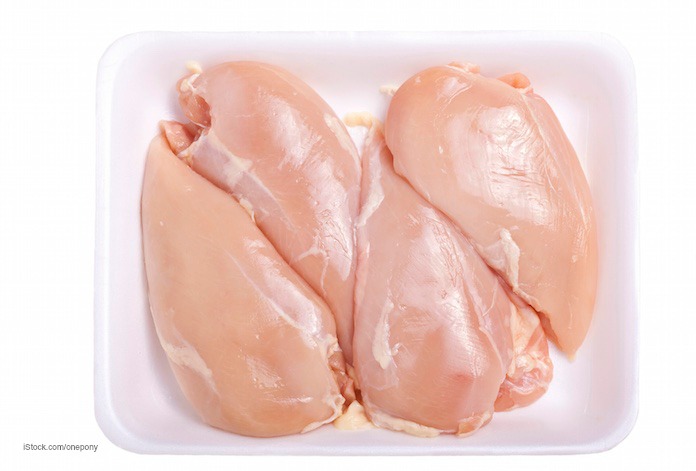New research conducted at North Carolina State University reveals that two of the most common strains of Campylobacter are exchanging genetic material. That means they are producing more infectious and antibiotic-resistant strains. And that is bad news for consumers, since those strains are common in the poultry industry.

In 2014, Consumer Reports conducted research on chicken breasts that they purchased in ordinary grocery stores. They found that potentially harmful bacteria, including Campylobacter and Salmonella, was present in almost all of the chicken, including organic brands. In fact, Campylobacter was found on 43% of the samples.
Lead author on the study, Maj. Dawn Hull, Army veterinarian and current Ph.D. student at NC State, said in a statement, “There are two strains of Campylobacter that we’re concerned with: C. coli and C. jejuni. C. jejuni causes up to 90% of human Campylobacter infections, but the good news is that this strain is less likely to carry multidrug-resistant genes. C. coli is twice as likely to contain multidrug-resistant genes, but it’s a less effective human pathogen. Multidrug resistant means that the bacteria have genes that are resistant to three or more antimicrobial classes.”
Campylobacter is what is known as a “plastic” genome, which means the strains exchange genetic material. If Campylobacter coli takes on a lot of Campylobacter jejuni’s genetic material, its virulence could increase, which could lead to more antibiotic-resistant infections in people.
The researchers sampled turkey and chicken from grocery stores in North Carolina from 2018 to 2019 and compared Campylobacter isolates from the meat to USDA samples taken from poultry farms in North Carolina. They found that Campylobacter coli was most common on farms, while Campylobacter jejuni was on 69% of retail chicken meat.
Worse, when the isolates were tested for antimicrobial-resistant genes, 90% of both strains contained at least one of those genes, and 43% had resistance genes to three or more antibiotic drug classes.
And there were significantly more new Campylobacter strains in 2019, 21, compared to only two in 2018. Hull said, “This study shows that genomic exchange is happening between C. coli and C. jejuni, and that there is increasing antimicrobial resistance in Campylobacter found in N.C. poultry production. Campylobacter is the worldwide leading cause for foodborne illness, so tracking this exchange is crucial to preventing transmission and providing future treatments.”
Authors: Dawn Hull, Erin Harrell, Maria Correa, Siddhartha Thakur, North Carolina State University; Arnoud van Vliet, University of Surrey, U.K.
Published: Online Feb. 11, 2021 in PLOS One




